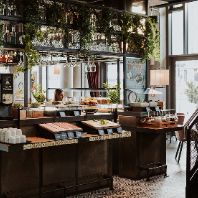According to Cushman & Wakefield, demand for retail parks, solus retail warehouse & foodstore units in Great Britain is forecast to increase by 6% to 11.49 million ft² (1.1 million m²) in 2016. C&W’s specialist Retail Warehouse and Foodstore Team forecast aggregate demand from over 200 multiple occupiers regarded as the core occupiers in the sector.
Aldi, Lidl and B&M are at the vanguard of 29 retail and restaurant occupiers which are looking to acquire at least 100,000 ft² (9,290 m²) of new floor space over the next 12 months. In addition, 35 occupiers, including Next, Tapi Carpets, Wilko, Costa and Poundland will each open more than 10 new sites next year.
Martin Supple, head of retail warehouse agency said “Overall occupier demand is forecast to be higher in 2016 driven by an increase in demand from the core non-food sector – we are predicting increase in activity from the home furnishing and fashion sector which will benefit retail parks in particular. Foodstore demand is changing fast with the smaller operators such as Aldi, Lidl and M&S expanding aggressively and increasingly seeing new opportunities within retail parks.”
Stuart Lunn, a senior retail director at Cushman & Wakefield, said: “We are seeing changes in the make-up of demand behind this increase – including a number of long standing occupiers such as Next seeking to relocate and open new formats. The scale of demand is capable of supporting 31,000 full time equivalent jobs, demonstrating the importance of the retail sector to the UK economy.”
The Cushman & Wakefield data show smaller format convenience food store operators (including the likes of Aldi, Lidl, Netto, M&S, and The Food Warehouse by Iceland) with opening requirements totalling 2.815 million ft² (261,522 m²) in 2016, which is a significant increase on previous years.
Reflecting the improving economy and housing market there is increased demand in the bulky goods and home furnishing sector driven by the likes of Steinhoff, Tapi Carpets, Wren Living and Homesense. Total floor space demand in this subsector is up to 2.42 million ft² (224,825 m²) in 2016.
Stuart Lunn added: “Buying home furnishings is something which continues to inspire customers to visit stores. It’s a very personal hands-on experience and has so far proved hard to replicate via pure e-commerce channels, which is why capital continues to back significant floorspace expansion in the sector.
“In the catering sector, it is expected that 33 occupiers will have aggregated requirements for over 250 new openings totalling 670,500 ft² (62,290 m²) in 2016. Food and beverage / restaurants are now considered a lynchpin of tenant mix on successful retail parks, and total floorspace demand has doubled over a three year period.”















